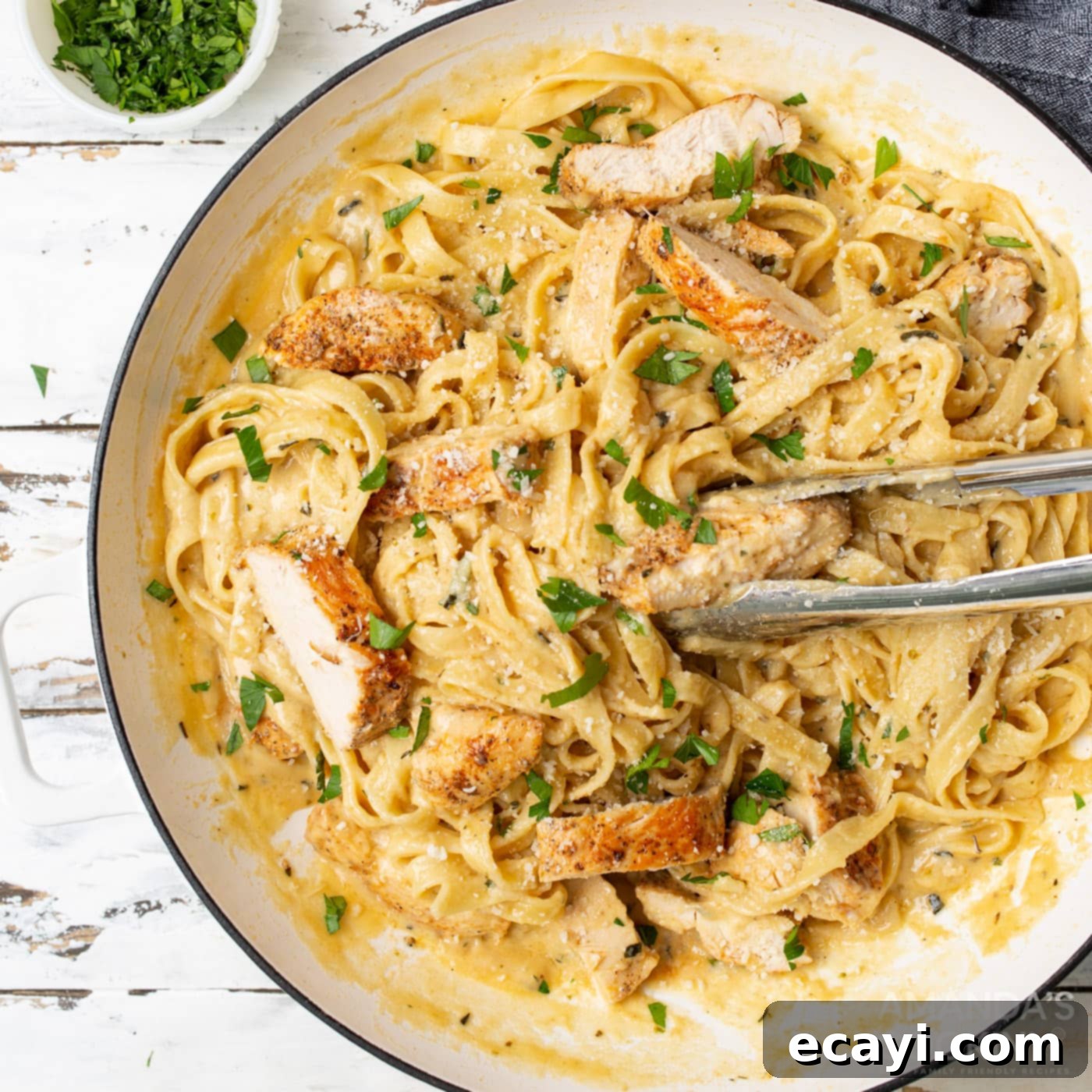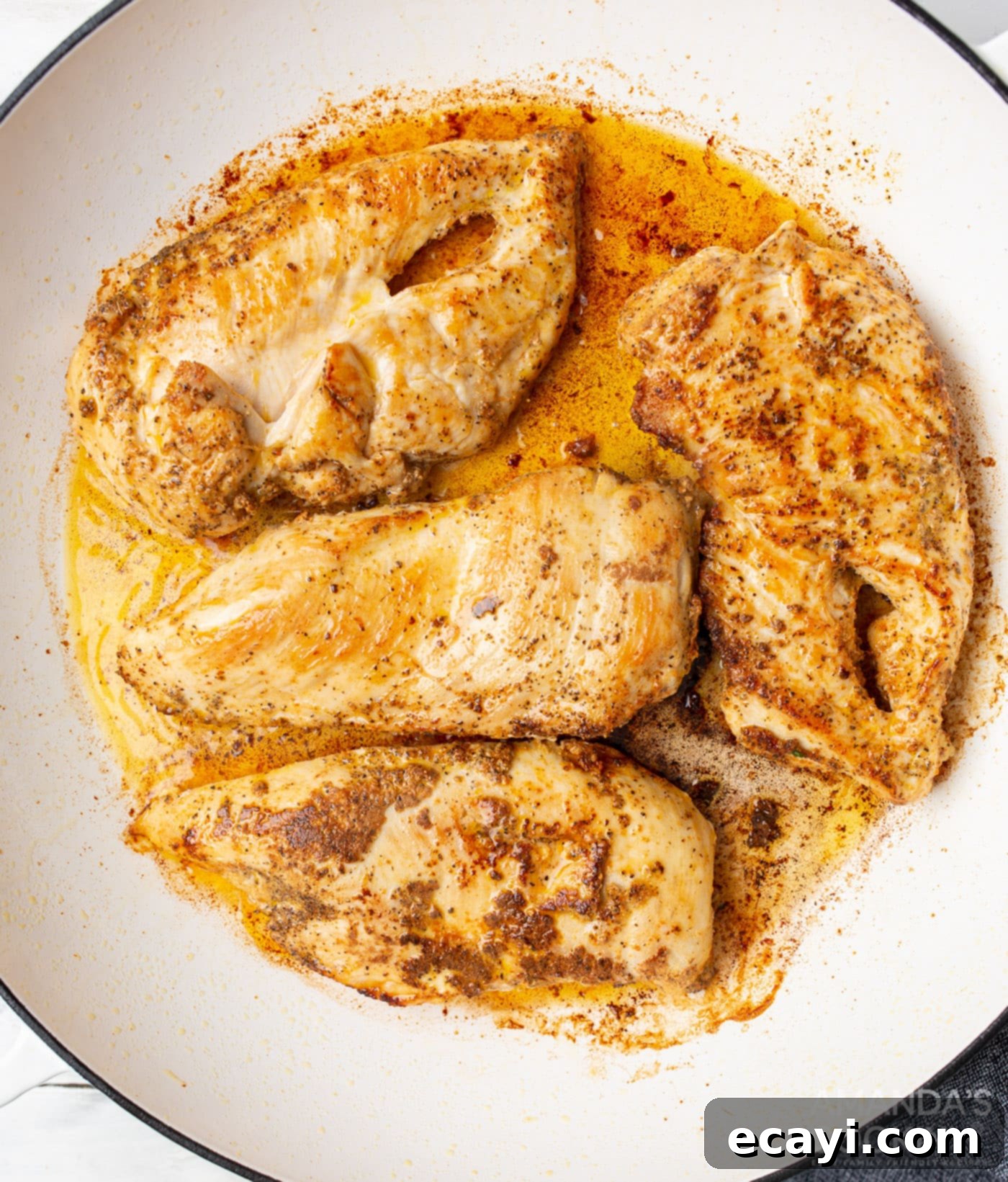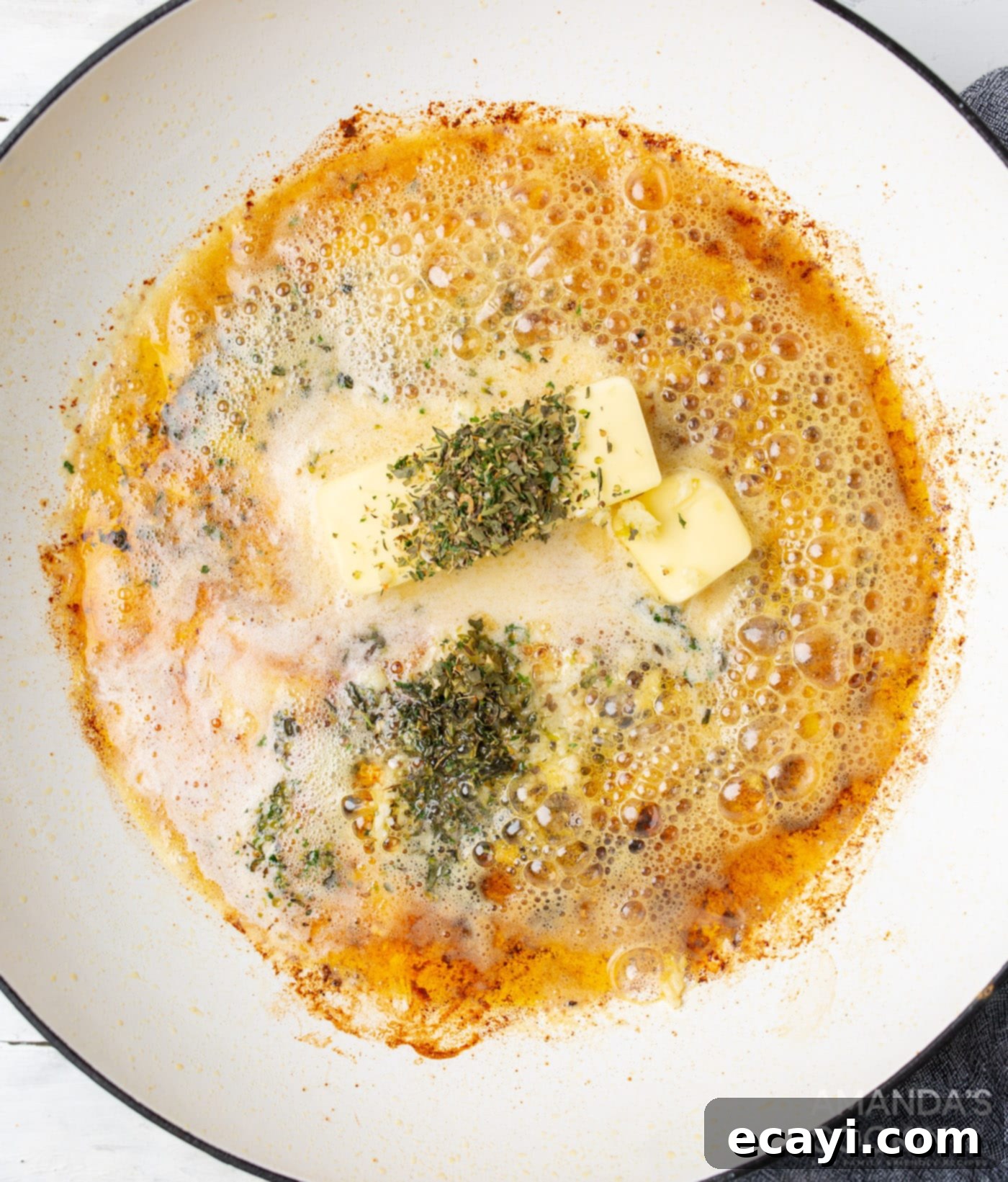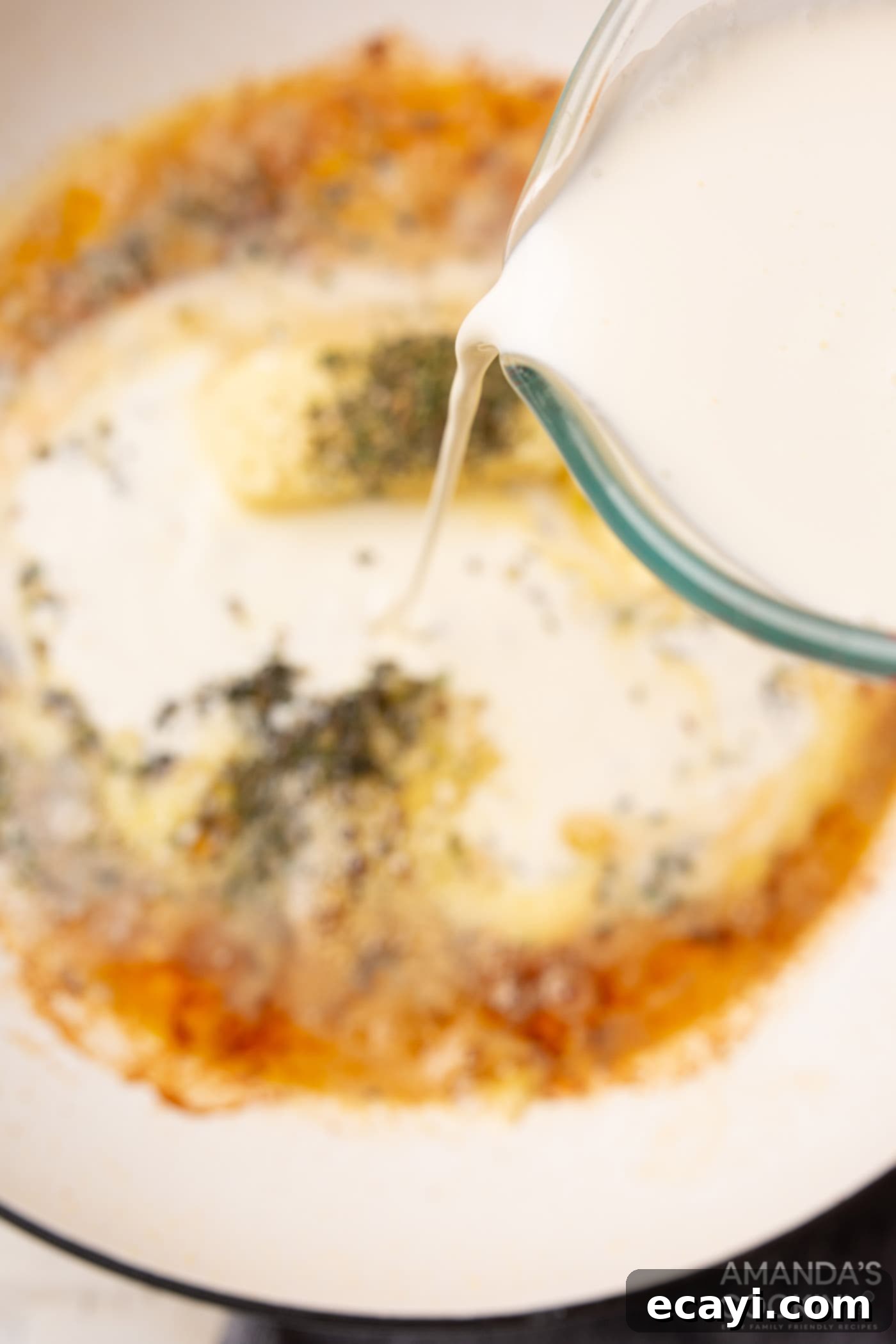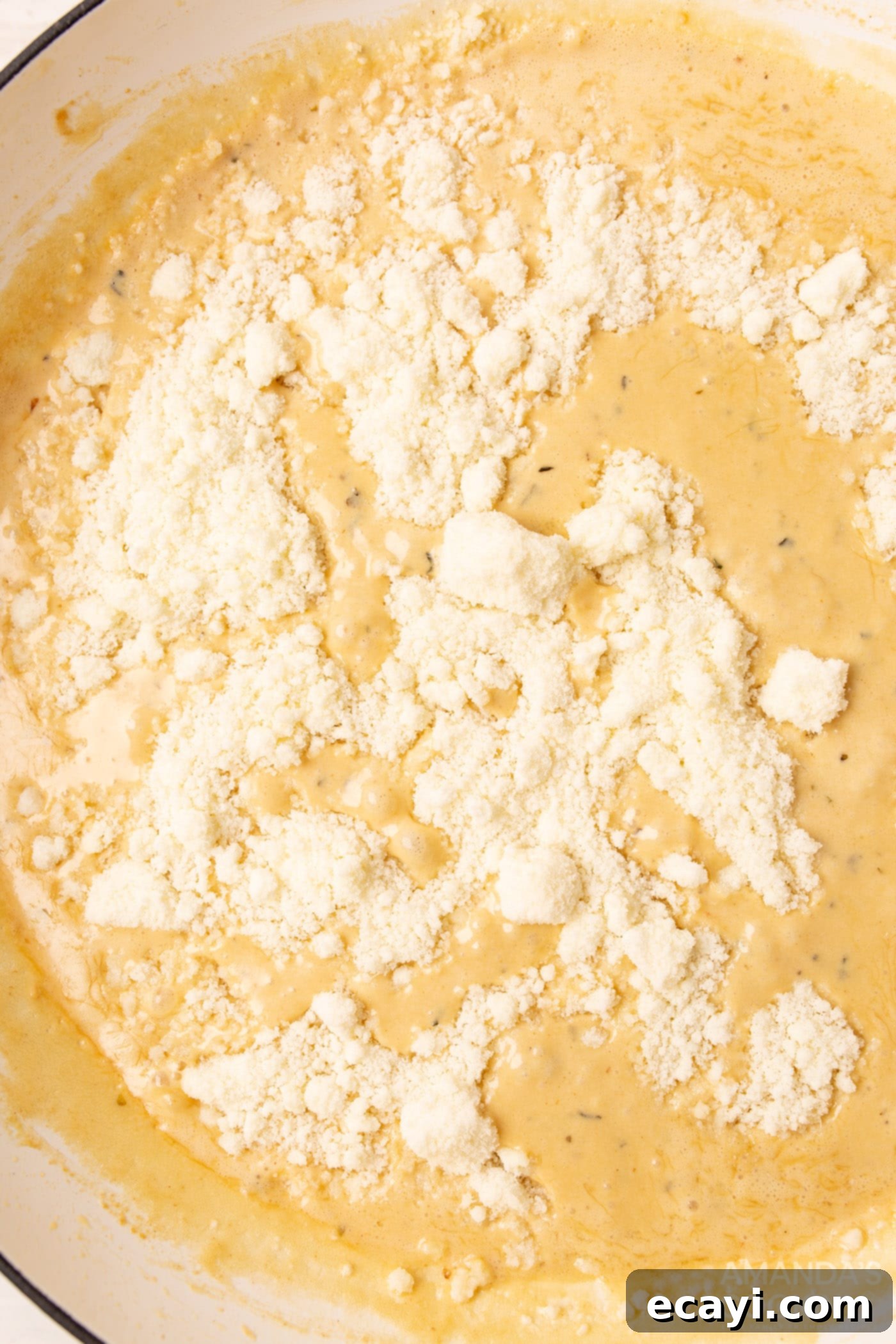Classic Creamy Chicken Alfredo Recipe: Your Guide to a Perfect Homemade Italian Feast
Indulge in the ultimate comfort food with this exquisite chicken alfredo recipe. Imagine tender, perfectly cooked chicken breasts, nestled atop a generous bed of silky fettuccine noodles, all generously coated in a rich, creamy, and undeniably satisfying homemade alfredo sauce. This isn’t just a meal; it’s an experience designed to bring warmth and flavor to your table, making it a beloved choice for any occasion, especially those busy weeknights.
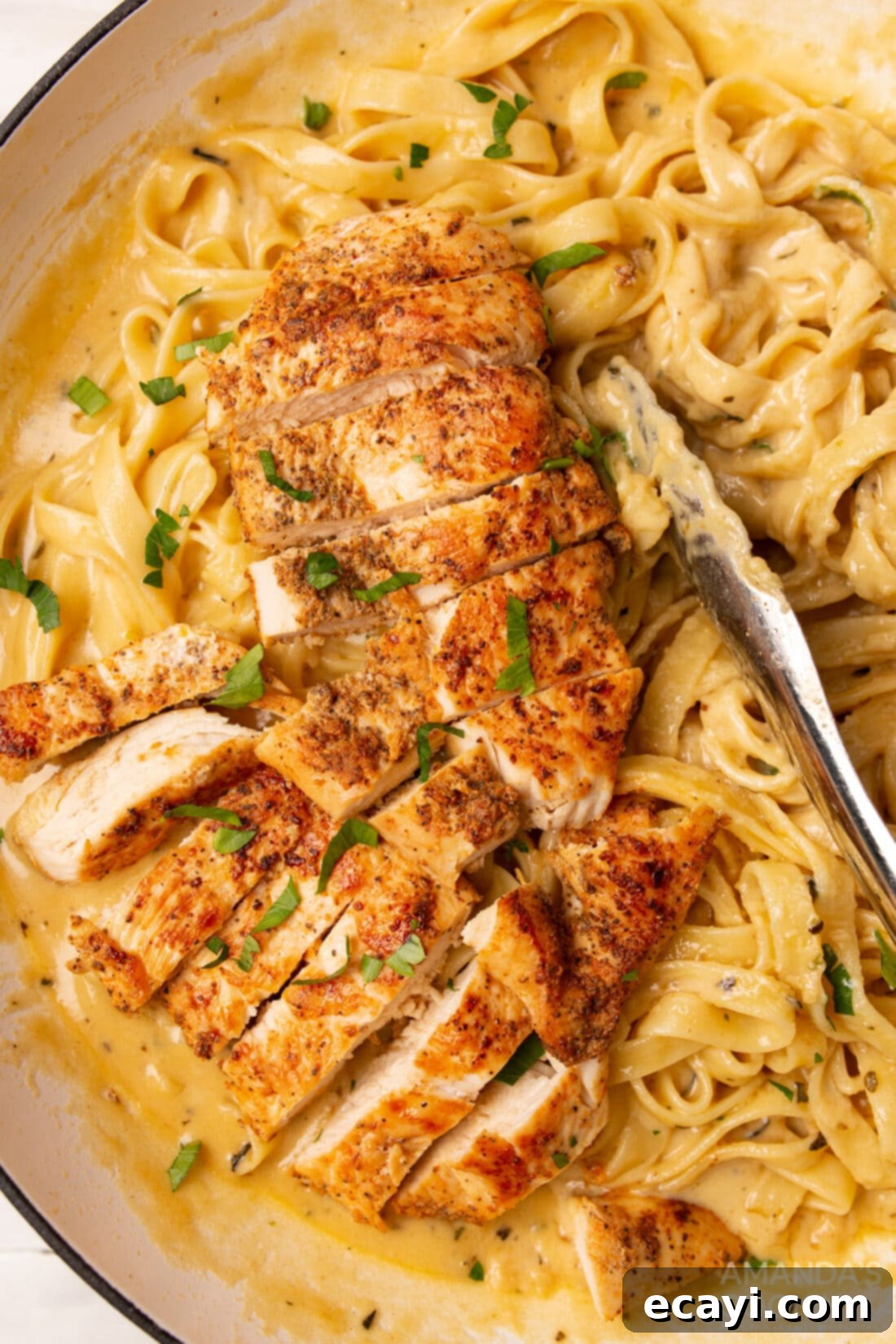
Why This Homemade Chicken Alfredo Recipe Works Wonders
There’s a reason classic chicken alfredo consistently ranks as one of the most popular pasta dishes globally. Its universal appeal lies in the perfect marriage of flavors and textures: the savory notes of golden-brown pan-seared chicken, the luxurious richness of a cheesy alfredo sauce, and the satisfying bite of perfectly cooked fettuccine. This dish isn’t just delicious; it’s incredibly filling and versatile, making it an ideal candidate for an easy weeknight meal that the whole family will request again and again.
What sets this particular recipe apart is its emphasis on simplicity without compromising on taste. We strip away unnecessary complexities, focusing on fresh, high-quality ingredients and straightforward cooking techniques. The result is a homemade alfredo that tastes superior to anything store-bought, with minimal effort. This recipe is designed to be approachable for home cooks of all skill levels, ensuring a successful and delicious outcome every time. From the perfectly seasoned chicken to the velvety smooth sauce, every component is crafted to deliver maximum flavor and comfort.
At its heart, alfredo is a deceptively simple yet incredibly flavorful sauce traditionally made with butter, heavy cream, and Parmesan cheese, often enhanced with fresh garlic and Italian seasonings. Its adaptability is one of its greatest strengths; alfredo sauce can elevate a myriad of dishes, from sophisticated creations like chicken cordon bleu lasagna and gourmet pizzas to, of course, the ever-popular chicken alfredo. This recipe celebrates the pure, unadulterated joy of a truly great alfredo sauce, demonstrating how a few key ingredients can transform into something truly extraordinary.
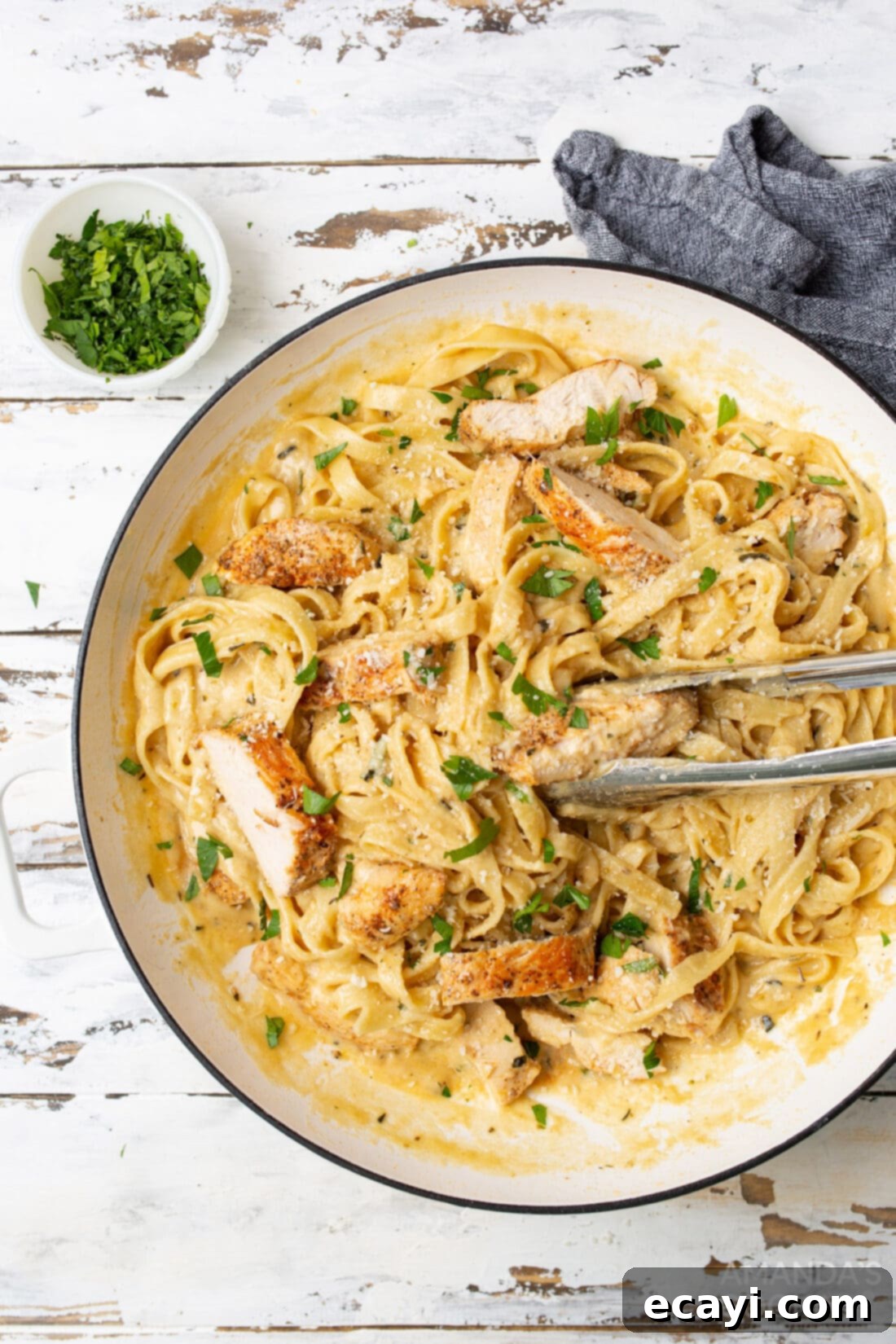
Essential Ingredients You Will Need for Creamy Chicken Alfredo
To embark on this delightful culinary journey, you’ll need a selection of fresh and flavorful ingredients. You can find all specific measurements, quantities, and detailed instructions in the printable recipe card located at the very end of this comprehensive guide. Gathering your ingredients before you start cooking, a practice known as mise en place, will ensure a smooth and enjoyable cooking experience.
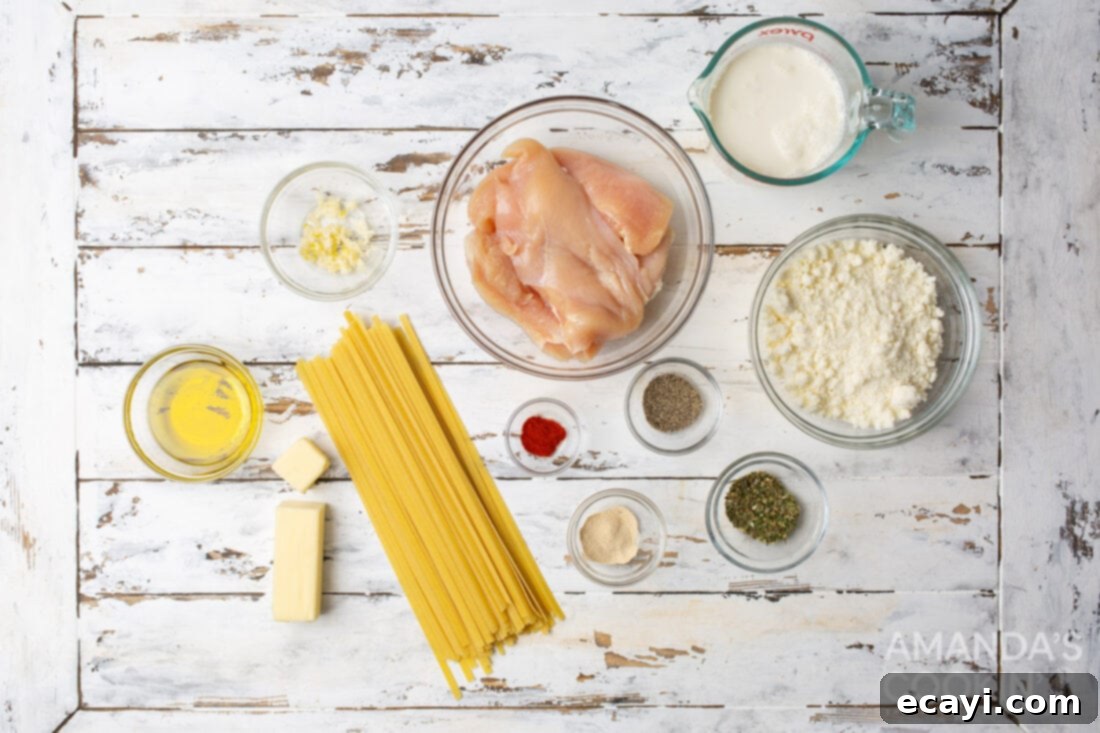
Key Ingredient Information & Expert Substitution Suggestions
Understanding your ingredients is the first step towards mastering any recipe, especially one as beloved as Chicken Alfredo. Here’s a deeper dive into the components that make this dish shine, along with some helpful tips and potential substitutions.
Crafting the Perfect Alfredo Sauce
The heart of this dish is undoubtedly its rich and creamy alfredo sauce. This recipe uses a classic combination of heavy cream, unsalted butter, freshly minced garlic, and quality Parmesan cheese, seasoned with Italian herbs. For the best consistency and flavor, particularly with the cheese, we strongly recommend using a block of high-quality Parmesan cheese and grating it yourself. Pre-shredded cheeses often contain anti-caking agents like cellulose, which can prevent the cheese from melting smoothly and result in a grainy sauce. Opting for fresh Parmesan (or even Parmigiano-Reggiano for an authentic Italian touch) will make a noticeable difference in the texture and overall richness of your sauce.
When selecting your heavy cream, ensure it is full-fat for that signature velvety texture. Lower-fat alternatives may not thicken as effectively and can sometimes curdle. As for the butter, unsalted is preferred as it gives you control over the overall sodium content of the dish. If you only have salted butter, simply reduce the amount of any added salt in the recipe. Freshly minced garlic is crucial here; it adds a pungent, aromatic depth that garlic powder cannot fully replicate, although a good quality garlic powder can be used in a pinch (about 1/2 teaspoon for every clove of fresh garlic). Italian seasoning, a blend of dried herbs like oregano, basil, thyme, and rosemary, provides a balanced herbaceous note.
Preparing the Tender Chicken Breasts
Boneless, skinless chicken breasts are the ideal choice for this recipe due to their lean nature, quick cooking time, and ability to absorb flavors. To ensure tender and juicy chicken every time, proper seasoning and cooking are key. We season the chicken generously with garlic powder for an extra layer of savory flavor, paprika for a hint of color and mild sweetness, and freshly ground black pepper for a subtle spice. For even cooking and maximum tenderness, consider pounding the chicken breasts to an even thickness (about 3/4 inch) before seasoning and searing.
The most important tip for perfectly cooked chicken is to monitor its internal temperature. Using a meat thermometer, cook the chicken until it reaches an internal temperature of 165°F (74°C). This ensures the chicken is fully cooked, safe to eat, and, crucially, still moist and tender. Overcooked chicken can become dry and tough. After searing, allow the chicken to rest for at least 5 minutes before slicing or cubing. This resting period allows the juices to redistribute throughout the meat, resulting in a much juicier final product. If you prefer, boneless, skinless chicken thighs can also be used for a slightly richer flavor, or even shrimp for a delicious seafood alfredo variation.
Choosing Your Pasta
Fettuccine noodles are the traditional choice for alfredo, their broad, flat surface perfect for clinging to the creamy sauce. However, feel free to experiment with other pasta shapes. Linguine offers a similar profile, while penne or rigatoni can capture pockets of sauce within their tubes. Even spaghetti can work in a pinch. Always cook your pasta according to package directions, aiming for an al dente texture—meaning it should be firm to the bite, not mushy. Remember to save a cup or two of the starchy pasta water before draining; this liquid gold can be used to adjust the consistency of your alfredo sauce if it becomes too thick.
How to Master the Art of Making Chicken Alfredo
These step-by-step photos and detailed instructions are provided to help you visualize each stage of the cooking process. For a printable version of this recipe, complete with precise measurements and comprehensive instructions, you can Jump to Recipe at the bottom of this post.
- Prepare and Sear the Chicken: Begin by patting your boneless, skinless chicken breasts dry with paper towels – this helps achieve a beautiful sear. Season both sides generously with garlic powder, paprika, and black pepper. Heat a large 12-inch skillet over medium-high heat. Add the olive oil and allow it to shimmer. Carefully place the seasoned chicken breasts in the hot skillet and sear for about 4-6 minutes per side, or until they are golden brown and cooked through to an internal temperature of 165°F (74°C). Once cooked, remove the chicken from the skillet and set it aside on a cutting board. Crucially, allow the chicken to rest for at least 5 minutes before cubing or slicing. This resting period helps the juices redistribute, ensuring your chicken remains incredibly tender and moist.

- Cook the Fettuccine: While the chicken is resting, bring a large pot of salted water to a rolling boil. Add your fettuccine pasta and cook according to the package instructions until it is al dente. Before draining, remember to reserve about 1-2 cups of the starchy pasta water. This liquid is invaluable for adjusting the sauce consistency later on. Drain the pasta and set it aside.
- Build the Alfredo Sauce Base: Using the same skillet where you cooked the chicken (don’t clean it, those browned bits add amazing flavor!), reduce the heat to medium-low. Add the butter to the skillet, allowing it to melt slowly. Once melted, add the freshly minced garlic and Italian seasoning. Sauté for about 1 minute, stirring constantly, until the garlic becomes fragrant. Be careful not to burn the garlic, as it can turn bitter.

- Incorporate the Cream: Gradually pour in the heavy cream, whisking continuously as you add it to combine with the butter and seasonings. Bring the mixture to a gentle simmer, stirring occasionally, but do not allow it to come to a rolling boil. Simmer for 2-3 minutes, or until the sauce begins to slightly thicken.

- Finish the Sauce and Combine: Remove the skillet from the heat. Gradually add the freshly grated Parmesan cheese, stirring constantly until the cheese has melted completely and the sauce is smooth and luxurious. Adding the cheese off the heat prevents it from clumping or becoming grainy. If the sauce appears too thick, slowly add some of the reserved pasta water, a tablespoon at a time, until it reaches your desired consistency. Finally, add the cooked fettuccine pasta and the sliced or cubed chicken to the skillet. Toss everything gently until the pasta and chicken are thoroughly coated in the creamy alfredo sauce. Serve immediately, garnished with fresh parsley or basil, and an extra sprinkle of Parmesan cheese if desired.

Frequently Asked Questions & Expert Tips for Success
For leftover chicken alfredo, store it in an airtight container in the refrigerator for 3-4 days. To reheat, the stovetop method is often preferred to maintain sauce quality. Gently warm the pasta and chicken in a skillet over medium-low heat. If the sauce has thickened or separated, add a small amount of milk, water, or even some chicken broth, stirring frequently until heated through and creamy again. You can also reheat it in the microwave in short intervals, stirring between each, adding liquid as needed to restore consistency.
If you find your sauce is too thin, continue to gently simmer it over low heat for an extra minute or two, stirring constantly. The sauce will naturally thicken a bit more as it cools off the heat, so allow it to sit for a moment before adding the pasta. Alternatively, if your sauce is too thick, this is where that reserved pasta water comes in handy! Gradually add a tablespoon at a time of the hot, starchy pasta water to the mixture, stirring until the sauce reaches your desired, luscious consistency. Never boil the sauce rapidly after adding cheese, as this can cause it to separate.
A grainy alfredo sauce is often caused by using pre-shredded cheese (due to anti-caking agents) or by adding cheese to a sauce that is too hot or boiling. Always use freshly grated Parmesan cheese. When incorporating the cheese, remove the skillet from direct heat and add the cheese gradually, stirring continuously until fully melted and smooth. The residual heat from the cream mixture will be sufficient to melt the cheese without overcooking it.
Absolutely! Chicken Alfredo is highly adaptable. Steamed broccoli florets, sautéed mushrooms, fresh spinach (stirred in at the very end until wilted), or even roasted red peppers are fantastic additions that add color, nutrition, and extra flavor. Add cooked vegetables to the pasta and chicken mixture before tossing with the sauce.
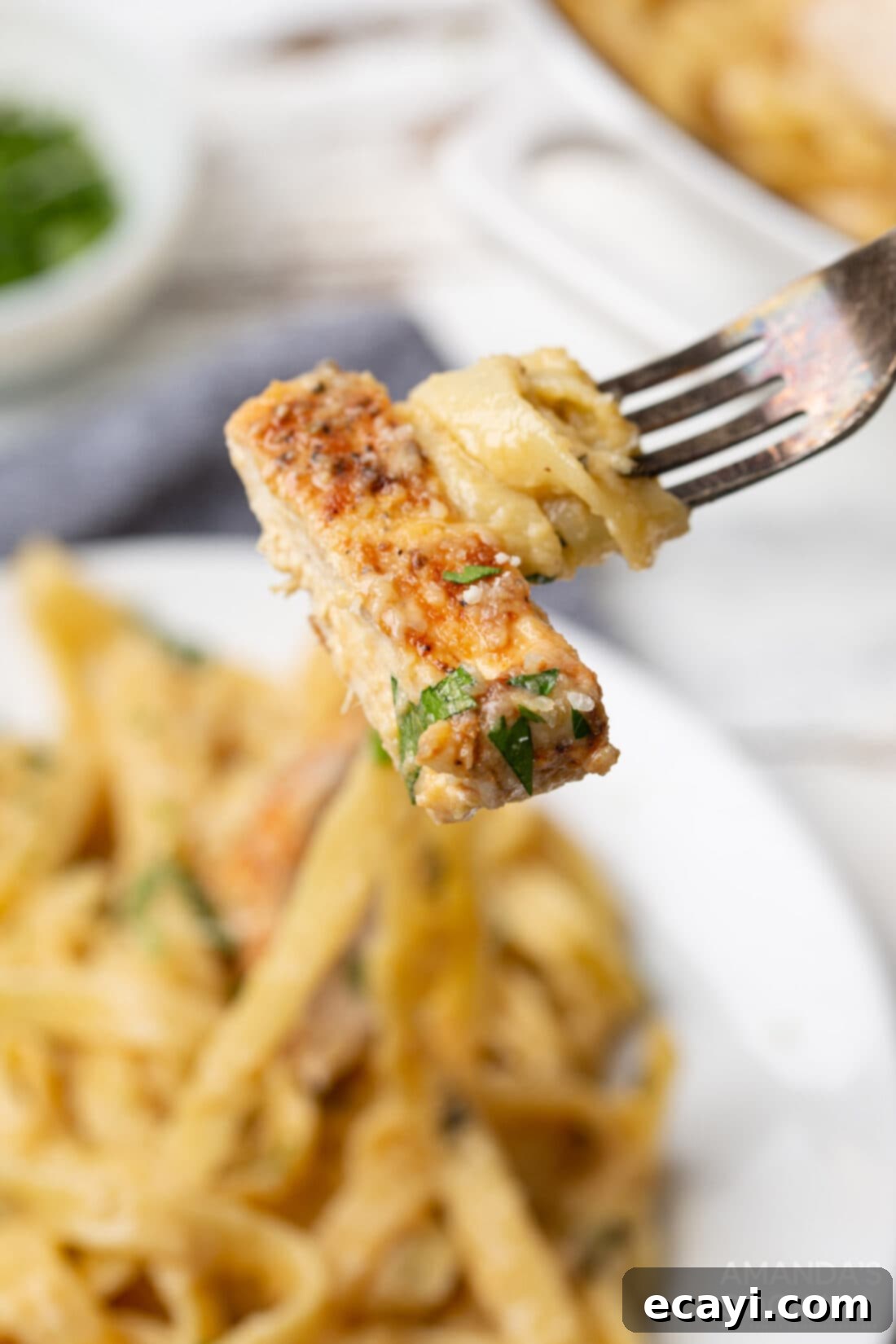
Delicious Serving Suggestions for Your Chicken Alfredo
While Chicken Alfredo is undeniably satisfying on its own, a few complementary sides can elevate your meal to a truly memorable experience. For optimal indulgence, serving it alongside a generous portion of cheesy garlic bread or crispy garlic knots is highly recommended. The bread is perfect for soaking up any extra creamy sauce left on your plate.
To balance the richness of the dish, consider pairing it with a fresh, crisp side salad tossed with a light vinaigrette. The bright, tangy notes of the salad provide a wonderful contrast to the creamy pasta. Many enjoy adding steamed or sautéed vegetables directly into their chicken alfredo, such as vibrant broccoli florets, earthy mushrooms, or wilted spinach, making it a complete meal in one bowl. For a final flourish, garnish your masterpiece with a sprinkling of fresh chopped parsley or basil, and a generous grating of additional Parmesan cheese right before serving. A glass of crisp white wine, like a Chardonnay or Pinot Grigio, would also pair beautifully with this Italian classic.
Explore More Irresistible Pasta Recipes
If you’ve enjoyed this creamy chicken alfredo, you’re in for a treat! Our kitchen is brimming with a variety of delicious pasta dishes waiting to be discovered. Expand your culinary repertoire with some of our other cherished pasta creations:
- Baked Ziti
- Hearty Italian Lasagna with Meat
- Savory Mushroom Ravioli
- Spicy Cajun Chicken Pasta
- Homemade Sun Dried Tomato Pesto
- Classic Spaghetti and Meatballs in Marinara
- Comforting Chicken Stroganoff
- Authentic Pasta Carbonara
We’re passionate about cooking and sharing delightful kitchen experiences with all of you! To make sure you never miss out on a new recipe, we offer a convenient newsletter. Simply subscribe today and start receiving our free daily recipes directly in your inbox. Join our community of home cooks and explore a world of flavor!

Chicken Alfredo
IMPORTANT – There are often Frequently Asked Questions within the blog post that you may find helpful. Simply scroll back up to read them!
Print It
Pin It
Rate It
Save It
Saved!
Ingredients
- 2 lbs boneless skinless chicken breasts
- ½ tsp garlic powder
- ¼ tsp paprika
- ¼ tsp black pepper
- 1 Tbsp olive oil
- 8 oz fettuccine pasta or linguine
- ½ cup unsalted butter (1 stick, 8 Tbsp.)
- 1 Tbsp Italian seasoning
- ½ Tbsp minced garlic (freshly minced recommended)
- 1 cup heavy whipping cream
- 8 oz Parmesan cheese (freshly grated from a block for best results)
Things You’ll Need
-
Large skillet
-
Large Stockpot
-
Whisk
-
Meat Thermometer
Chef’s Notes & Pro Tips
- If you find your sauce is too thin, continue to gently simmer it over low heat for an extra minute or two, stirring constantly. The sauce will naturally thicken a bit more as it cools off the heat, so allow it to sit for a moment before adding the pasta. Alternatively, if your sauce is too thick, gradually add a tablespoon at a time of the hot, starchy pasta water to the mixture, stirring until the sauce reaches your desired, luscious consistency.
- Always use freshly grated Parmesan cheese for the smoothest, non-grainy sauce. Pre-shredded varieties often contain anti-caking agents that can interfere with melting.
- For the most tender chicken, ensure it reaches an internal temperature of 165°F (74°C) and allow it to rest for 5 minutes after cooking before slicing.
Instructions
-
Season chicken breasts with garlic powder, paprika, and black pepper. Heat a large 12-inch skillet over medium-high heat with olive oil until shimmering.
-
Sear chicken on both sides for 4-6 minutes per side, cooking until golden brown and reaching an internal temperature of 165°F. Remove chicken from skillet and allow it to rest for 5 minutes before cubing or slicing.
-
Cook the fettuccine pasta to package instructions in a large pot of salted boiling water until al dente. Reserve 1-2 cups of pasta water before draining.
-
Reduce skillet heat to medium-low. Add butter, minced garlic, and Italian seasoning to the skillet; sauté for 1 minute until fragrant. Slowly pour in the heavy cream, whisking continuously, and bring to a gentle simmer for 2-3 minutes until slightly thickened. Remove from heat.
-
Gradually dust in the grated Parmesan cheese, stirring until completely melted and the sauce is smooth. Add cooked pasta and chicken; toss until thoroughly coated. Serve immediately, garnished with fresh parsley or basil.
Nutrition Information
Calories: 763cal |
Carbohydrates: 30g |
Protein: 52g |
Fat: 48g |
Saturated Fat: 27g |
Polyunsaturated Fat: 3g |
Monounsaturated Fat: 14g |
Trans Fat: 1g |
Cholesterol: 249mg |
Sodium: 940mg |
Potassium: 740mg |
Fiber: 2g |
Sugar: 1g |
Vitamin A: 1476IU |
Vitamin C: 2mg |
Calcium: 514mg |
Iron: 2mg
Tried this Recipe? Pin it for Later!Follow on Pinterest @AmandasCookin or tag #AmandasCookin!
The recipes on this blog are tested with a conventional gas oven and gas stovetop. It’s important to note that some ovens, especially as they age, can cook and bake inconsistently. Using an inexpensive oven thermometer can assure you that your oven is truly heating to the proper temperature. If you use a toaster oven or countertop oven, please keep in mind that they may not distribute heat the same as a conventional full sized oven and you may need to adjust your cooking/baking times. In the case of recipes made with a pressure cooker, air fryer, slow cooker, or other appliance, a link to the appliances we use is listed within each respective recipe. For baking recipes where measurements are given by weight, please note that results may not be the same if cups are used instead, and we can’t guarantee success with that method.
